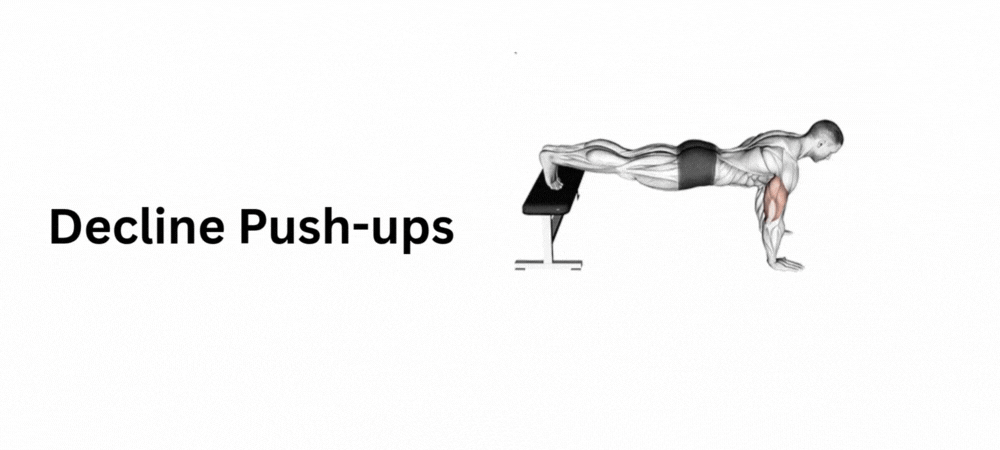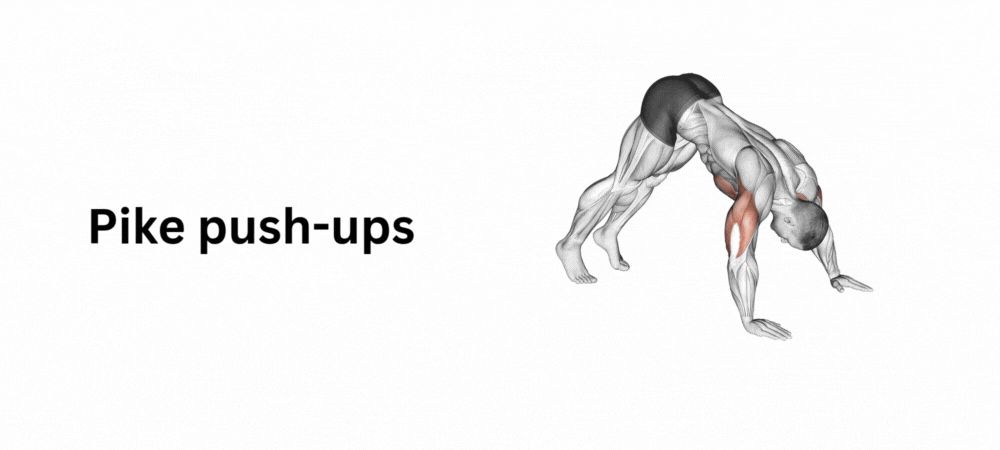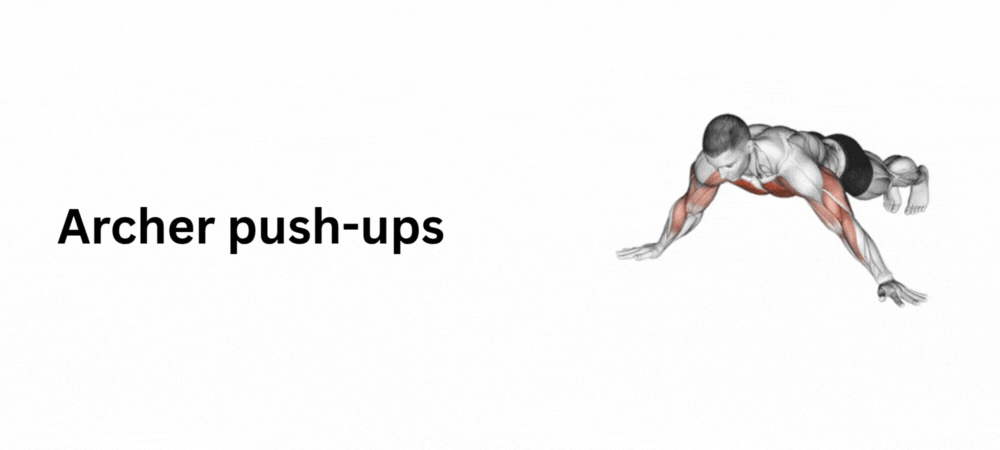Table of Contents
Introduction
Decline push-ups are a dynamic bodyweight exercise that have surged in popularity among fitness enthusiasts, athletes, and anyone looking to amp up their upper body training. Unlike the classic push-up, decline push-ups elevate your feet on a bench, box, or sturdy surface, shifting the intensity to your upper chest, shoulders, and core. This simple adjustment transforms a foundational exercise into a powerful tool for muscle building, strength training, and full-body fitness.
What makes decline push-ups so effective? They’re accessible, require minimal equipment, and can be adapted for any fitness level. Whether you’re an experienced athlete aiming to break through a plateau or a beginner seeking new challenges, adding decline push-ups to your workout routine delivers impressive results. In this comprehensive guide, you’ll discover the benefits, proper technique, variations, and actionable tips for maximizing your decline push-up performance.
Benefits of Decline Push-ups
1. Enhanced Upper Chest Activation
Decline push-ups are renowned for their ability to target the upper chest (clavicular head of the pectoralis major) more effectively than standard push-ups. By elevating your feet, you shift your body angle, increasing muscle activation in the upper chest region. This makes it a go-to exercise for those seeking a fuller, more defined chestwithout the need for weights or machines.
Scientific research supports this benefit. A study published in the Journal of Strength and Conditioning Research found that decline push-ups significantly increase upper chest activation compared to traditional push-ups. This focused engagement can help balance chest development, especially if your lower chest is more dominant from regular push-ups or bench pressing.
2. Increased Shoulder and Triceps Strength
Another standout benefit of decline push-ups is the greater recruitment of the anterior deltoids (front shoulders) and triceps. The steeper angle forces these muscles to work harder, leading to increased strength and size. The triceps, responsible for elbow extension, are particularly challenged as they stabilize the movement and assist in pressing the body upward.
Stronger shoulders and triceps are essential for athletic performance, day-to-day tasks, and injury prevention. The elevated position of decline push-ups means you’re pressing a higher percentage of your body weight, offering a strength-training challenge that rivals traditional gym exercises.
3. Greater Core Engagement and Stability
Maintaining proper form during decline push-ups demands serious core activation. Your abs, obliques, and lower back muscles all work together to stabilize your body and prevent sagging or arching. This results in a workout that not only targets your upper body but also strengthens your entire core.
Developing a strong core enhances functional fitness, improves posture, and reduces the risk of injuries both inside and outside the gym. Many users report feeling their core “light up” during decline push-ups, especially as they increase the angle or volume of their sets.
4. Progressive Overload and Workout Versatility
Decline push-ups offer easy progression and regression by simply adjusting the height of your foot elevation. Want to make the exercise harder? Raise your feet higher or use an unstable surface like a stability ball. Need to dial it back? Lower the height or bend your knees for support.
This adaptability makes decline push-ups suitable for all fitness levels and goals. You can use them to break plateaus, spice up your routine, or as a stepping stone toward advanced calisthenics movements like handstand push-ups.
5. Convenience and Minimal Equipment
One of the most appealing aspects of decline push-ups is their convenience. You don’t need expensive gym equipment; a sturdy bench, box, or even a couch will do. You can perform them at home, in a hotel room, or outdoors, making them a perfect option for busy schedules or travel.
Their simplicity removes common barriers to fitness, empowering anyone to build strength and muscle anywhere, anytime.
How to Perform Decline Push-ups
Equipment Needed
The beauty of decline push-ups is their simplicity. Here’s what you need:
- A sturdy elevated surface: Bench, box, step, chair, or even a stack of books.
- Flat, non-slip floor: To ensure safety and proper form.
- Optional: Yoga mat for comfort, especially on hard surfaces.
Step-by-Step Instructions
Setup
- Choose your elevated surface. Position it so it won’t shift during exercise.
- Kneel in front of the surface, facing away. Place your hands shoulder-width apart on the floor, fingers spread for stability.
- Place your feet on the surface. Start with your toes on the bench or box, legs straight.
Execution
- Set your body in a straight line from head to heels. Engage your core and glutes to avoid sagging hips.
- Lower your chest toward the floor, keeping elbows at a 45-degree angle to your torso. Inhale as you lower, maintaining a controlled descent.
- Pause briefly when your chest is just above the floor (or as low as you can comfortably go).
- Press through your palms to extend your arms, exhaling as you return to the starting position.
- Repeat for desired reps, keeping your movements smooth and controlled.
Key form tips:
- Keep your neck neutral; avoid craning your head.
- Don’t let your hips sag or pike.
- Maintain a tight core and squeezed glutes throughout the set.
Repetitions and Sets
- Beginners: 2–3 sets of 6–10 reps.
- Intermediate: 3–4 sets of 10–15 reps.
- Advanced: 4–5 sets of 15–20+ reps, or add tempo/pauses for increased difficulty.
Allow 60–90 seconds of rest between sets. Adjust volume and intensity based on your fitness goalsmuscle building, strength, or endurance.
Video
Additional Tips for Success
- Warm up your shoulders, wrists, and chest before starting.
- Focus on quality, not quantity. Perfect form yields better results than cranking out sloppy reps.
- Gradually increase elevation or reps as you progress.
- Pair with other push-up variations for balanced development.
- Listen to your body. If you feel pain in your wrists, shoulders, or lower back, reassess your form or lower the elevation.
Common Mistakes to Avoid
1. Letting Hips Sag or Pike
A common pitfall is letting your hips sag (dropping too low) or pike (lifting too high), which puts strain on your lower back and reduces core activation. Always aim for a straight line from shoulders to heels.
2. Flaring Elbows Too Wide
Allowing elbows to flare out excessively can increase shoulder strain and reduce chest activation. Keep elbows at about a 45-degree angle for optimal muscle engagement and joint safety.
3. Incomplete Range of Motion
Not lowering your chest fully or using half-reps limits the effectiveness of the exercise. Aim for full range of motionchest just above the floor, arms locked out at the top.
4. Rushing Through Reps
Performing reps too quickly sacrifices control and muscle activation. Move slowly and deliberately, focusing on muscle contraction and form.
Muscles Worked in Decline Push-ups
Primary Muscle Group
- Upper Chest (Clavicular Pectoralis Major): The angle of decline push-ups directly targets the upper portion of your chest, making it the primary muscle group worked.
Secondary Muscles
- Anterior Deltoids (Front Shoulders): Stabilize and assist during the pressing movement.
- Triceps Brachii: Extend the elbows as you push up.
- Core Muscles: Abdominals, obliques, and lower back stabilize your body and maintain alignment.
- Serratus Anterior: Assists with scapular movement and shoulder stability.
Variations of Decline Push-ups
1. Decline Push-ups with Stability Ball
Place your feet on a stability ball instead of a bench to challenge your balance and core stability even more.
2. Archer Decline Push-ups
Move one hand out farther to the side, performing a single-arm-dominant push-up. This increases unilateral strength and muscle activation.
3. Decline Diamond Push-ups
Place your hands close together in a diamond shape beneath your chest. This shifts the focus to your triceps for advanced arm development.
4. Deficit Decline Push-ups
Perform decline push-ups with your hands on push-up handles or blocks to increase your range of motion and intensify the stretch at the bottom.
5. Decline Plyometric Push-ups
Push explosively off the ground, clapping your hands or simply lifting them briefly. This variation boosts power and fast-twitch muscle fiber recruitment.
Incorporating Decline Push-ups into Your Routine
Sample Workout
Here’s a balanced upper body workout featuring decline push-ups:
- Warm-up: 5–10 minutes dynamic stretches (arm circles, shoulder taps)
- Decline Push-ups: 4 sets of 12 reps
- Pull-ups or Rows: 4 sets of 8–12 reps
- Incline Push-ups: 3 sets of 15 reps
- Plank Holds: 3 sets of 45 seconds
- Cool-down: Gentle stretching (chest, shoulders, triceps)
Training Frequency
- Beginner: 2–3 times per week, with at least one rest day between sessions.
- Intermediate/Advanced: 3–4 times per week, integrated with other push/pull or full-body workouts.
Always consider your recovery, total volume, and other training components when scheduling decline push-ups.
Safety Considerations
1. Warm Up Thoroughly
Always perform a dynamic warm-up targeting your shoulders, wrists, and chest to prevent strains and prepare your body.
2. Use a Stable Surface
Make sure your elevated surface is secure and non-slip. An unstable bench or chair can lead to falls and injuries.
3. Monitor Range of Motion
Don’t force yourself to the floor if your shoulders or wrists feel compromised. Use a range of motion that’s safe for your joints.
4. Listen to Your Body
Stop if you experience sharp pain or discomfort. Modify the exercise or lower the elevation as needed, especially if you have a history of shoulder or wrist issues.
For more on safe exercise practices, consult resources from ACE Fitness or the Mayo Clinic.
FAQs
1. Are decline push-ups better than regular push-ups?
Decline push-ups target the upper chest and shoulders more intensely due to the changed angle, while regular push-ups offer more balanced overall chest activation. Both have unique benefits and can be used together for complete muscle development.
2. Can beginners do decline push-ups?
Yes, but start with a low elevation and perfect your form with regular push-ups first. Progress gradually to avoid strain.
3. How high should I elevate my feet?
A height of 12–24 inches is typical. Higher elevations increase difficulty and upper chest activation but require more core strength. Adjust based on your ability and comfort.
4. Will decline push-ups build muscle?
Absolutely. By increasing intensity and muscle activation, decline push-ups stimulate hypertrophy (muscle growth) in the chest, shoulders, and triceps, especially when performed with progressive overload and proper nutrition.
5. Are decline push-ups safe for shoulders?
When done with correct formelbows at 45 degrees, stable core, no sagging hipsdecline push-ups are safe for most healthy shoulders. Those with pre-existing shoulder injuries should consult a professional before adding them to their routine.
Conclusion
Decline push-ups are a versatile, challenging, and effective exercise for building upper chest strength, sculpting muscle, and enhancing overall fitness. By elevating your feet, you increase the intensity, recruit new muscle fibers, and engage your core like never before. Whether you’re training at home or in the gym, decline push-ups deliver results for athletes, bodybuilders, and everyday fitness enthusiasts alike.
Remember to prioritize form, progress gradually, and integrate decline push-ups with other strength training and muscle building exercises. For research-backed information on resistance training and bodyweight exercise benefits, visit PubMed’s exercise science.
Stay consistent, push your limits, and watch your upper body strength soar with decline push-ups!







